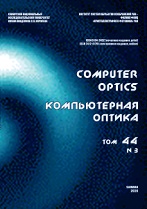|
This article is cited in 2 scientific papers (total in 2 papers)
IMAGE PROCESSING, PATTERN RECOGNITION
Facial expression recognition based on adaptation of the classifier to videos of the user
E. N. Churaeva, A. V. Savchenkoab
a HSE University, Laboratory of Algorithms and Technologies for Networks Analysis, 603093, Nizhny Novgorod, Russia, Rodionova 136
b Sber AI, 121170, Moscow, Russia, Kutuzovsky prospekt 32, building 2
Abstract:
In this paper, an approach that can significantly increase the accuracy of facial emotion recognition by adapting the model to the emotions of a particular user (e.g., smartphone owner) is considered. At the first stage, a neural network model, which was previously trained to recognize facial expressions in static photos, is used to extract visual features of faces in each frame. Next, the face features of video frames are aggregated into a single descriptor for a short video fragment. After that a neural network classifier is trained. At the second stage, it is proposed that adaptation (fine-tuning) to this classifier should be performed using a small set of video data with the facial expressions of a particular user. After emotion classification, the user can adjust the predicted emotions to further improve the accuracy of a personal model. As part of an experimental study for the RAVDESS dataset, it has been shown that the approach with model adaptation to a specific user can significantly (up to 20 – 50%) improve the accuracy of facial expression recognition in the video.
Keywords:
facial expression classification, neural network classifier adaptation, speaker-dependent emotion recognition
Received: 30.12.2022
Accepted: 15.04.2023
Citation:
E. N. Churaev, A. V. Savchenko, “Facial expression recognition based on adaptation of the classifier to videos of the user”, Computer Optics, 47:5 (2023), 806–815
Linking options:
https://www.mathnet.ru/eng/co1182 https://www.mathnet.ru/eng/co/v47/i5/p806
|

| Statistics & downloads: |
| Abstract page: | 24 | | Full-text PDF : | 16 | | References: | 13 |
|




 Contact us:
Contact us: Terms of Use
Terms of Use
 Registration to the website
Registration to the website Logotypes
Logotypes








 Citation in format
Citation in format 
